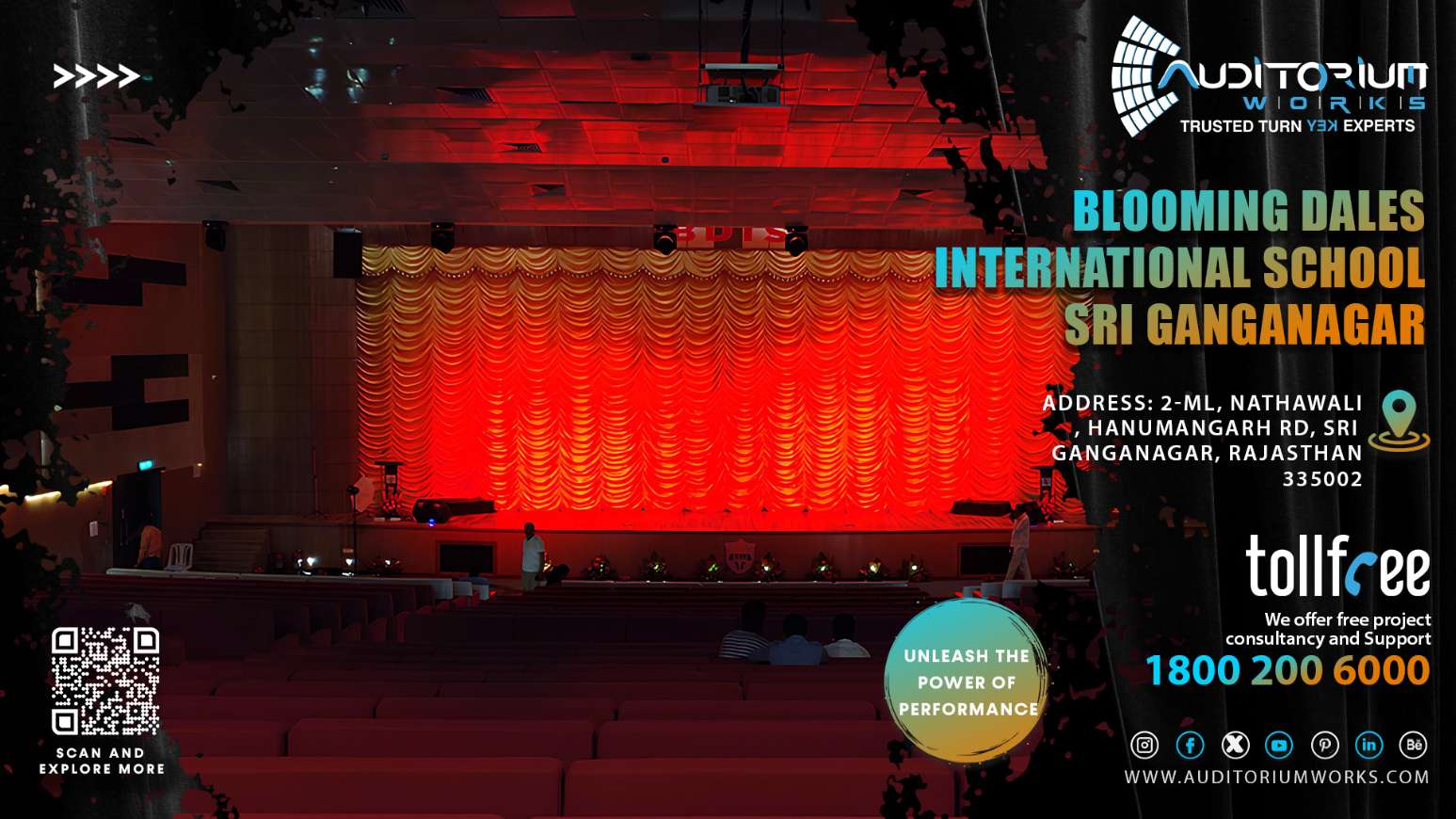LED Lighting in Auditoriums: Enhancing Ambiance and Saving Energy
The Transformation of Auditorium Lighting
Auditorium lighting has come a long way from simple incandescent bulbs. Today, Light Emitting Diodes (LEDs) are revolutionizing how these spaces are illuminated, offering a compelling blend of artistic possibilities and pragmatic benefits. This transformation goes beyond mere illumination; it impacts the entire audience experience, operational costs, and environmental footprint.
The Aesthetic Advantages of LED Auditorium Lighting
LEDs provide unparalleled control over light. Their dimming capabilities allow for subtle shifts in mood, enhancing the emotional impact of performances. Precise color temperature control creates a range of atmospheres, from the warm glow of a theatrical production to the crisp, professional feel of a corporate presentation. The directional nature of LED light minimizes spill and glare, improving visibility for both performers and the audience. Programmable lighting consoles can now orchestrate complex lighting sequences effortlessly, creating dynamic and engaging visual experiences. Specialized LED fixtures, such as ellipsoidal reflector spotlights (ERS) and wash lights, offer further creative possibilities for highlighting specific areas or creating broad washes of color. Moreover, LED fixtures are available in various sizes and configurations, allowing for discreet integration into the architectural design of the auditorium.
Cost Savings and Energy Efficiency: A Smart Investment
The initial investment in LED lighting is often perceived as higher than traditional lighting systems. However, the long-term cost savings are significant. LEDs consume considerably less energy than incandescent, halogen, or even fluorescent lights. This reduction in energy consumption translates directly into lower electricity bills. Furthermore, LEDs have a significantly longer lifespan. Traditional bulbs require frequent replacement, which involves labor costs and potential disruption to auditorium operations. LEDs, on the other hand, can last for tens of thousands of hours, minimizing maintenance requirements and reducing the total cost of ownership. These savings, coupled with potential rebates and incentives from energy providers, make LED lighting a sound financial investment for auditorium owners.
Improved Performance and Reduced Heat
Auditoriums often grapple with the challenges of heat generated by traditional lighting systems. This heat can impact the comfort of the audience and performers and can strain the auditorium’s HVAC systems. LEDs produce significantly less heat, creating a more comfortable environment and reducing the load on cooling systems. This lower heat output also reduces the risk of fire hazards and protects sensitive equipment. The consistent performance of LEDs ensures that the lighting remains stable throughout a performance, without flickering or dimming that can distract the audience. This reliability contributes to a more professional and polished presentation.
Environmental Responsibility: A Sustainable Choice
Choosing LED lighting demonstrates a commitment to environmental sustainability. The reduced energy consumption of LEDs translates to a smaller carbon footprint, contributing to a more environmentally responsible operation. Furthermore, LEDs do not contain hazardous materials like mercury, which is found in some fluorescent lamps. This eliminates the environmental concerns associated with disposal. By opting for LED lighting, auditorium owners can align themselves with green building practices and demonstrate a commitment to a more sustainable future.
Retrofitting Existing Auditoriums with LED Lighting
Upgrading an existing auditorium to LED lighting is a worthwhile investment. Retrofitting involves replacing existing fixtures with LED alternatives. The process typically requires a lighting audit to assess the current lighting system and identify appropriate LED replacements. The selection of LED fixtures should consider factors such as light output, color temperature, dimming capabilities, and compatibility with existing wiring and control systems. Professional installation is crucial to ensure proper operation and maximize the benefits of LED lighting. With careful planning and execution, retrofitting can transform an existing auditorium into a more energy-efficient, visually appealing, and environmentally responsible space.
Controlling LED Lighting for Maximum Impact
The full potential of LED lighting is realized through sophisticated control systems. DMX (Digital Multiplex) control allows for precise control over individual fixtures, enabling intricate lighting designs and dynamic effects. Lighting consoles provide an intuitive interface for programming and controlling lighting scenes. Wireless control options offer flexibility and convenience. Integrating lighting control with other building systems, such as automated shades and HVAC, can further optimize energy efficiency and enhance the overall user experience. Investing in a robust and user-friendly control system is essential for maximizing the artistic and practical benefits of LED auditorium lighting.



